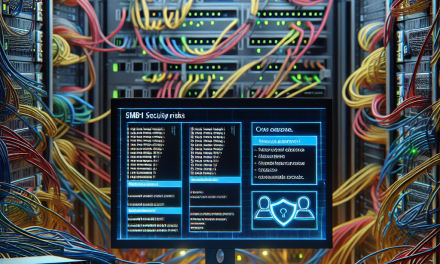Introduction
As organizations continue to embrace cloud computing and microservices architectures, containerization has emerged as a pivotal technology. Windows Server Secure Container Runtimes offer a robust solution for developing, deploying, and managing applications within isolated environments. This article explores the fundamentals of container runtimes in Windows Server, detailing their architecture, security features, and use cases.
What are Container Runtimes?
Container runtimes are essential components in the container ecosystem. They enable the creation, management, and execution of containers—lightweight, standalone, executable packages that include everything needed to run software, from code to libraries. Windows Server supports various container runtimes, with Docker being the most widely used.
Overview of Windows Server Containers
Windows Server containers are designed to encapsulate applications within isolated environments on a Windows operating system. Unlike traditional virtual machines, containers share the host OS kernel, which makes them more lightweight and efficient.
Types of Windows Containers
-
Windows Server Containers: These containers share the kernel with the host operating system and require the same base image. They are suitable for workloads that are not highly dependent on isolation.
- Hyper-V Containers: For enhanced security and isolation, Hyper-V containers run each container in a lightweight virtual machine. This separation from the host OS provides added security against potential vulnerabilities.
Benefits of Using Secure Container Runtimes
1. Enhanced Security
Windows Server Secure Container Runtimes enhance security through features such as:
-
Isolation: Hyper-V containers provide an additional layer of separation between the container and the host, mitigating risks associated with vulnerabilities in the OS.
-
Runtime Protection: Tools like Windows Defender can be integrated to automatically monitor and manage threats in real-time.
- Windows Security Features: Tightly integrated with Windows security features, including Windows Authentication, BitLocker, and Control Flow Guard, secure container runtimes make it difficult for malicious actors to exploit vulnerabilities.
2. Efficiency and Performance
Containers are lightweight and consume fewer resources compared to traditional VM setups. They enable rapid scaling of applications without compromising performance, making them ideal for both development and production environments.
3. Improved Portability
By encapsulating all dependencies within a container, apps can run consistently across different environments—reducing compatibility issues when deploying applications on various platforms.
Deploying and Managing Containers on Windows Server
The deployment of Windows containers typically involves the following steps:
-
Install Docker: The Docker Engine should be installed on the Windows Server to facilitate container management.
-
Pull Container Images: Use Docker Hub or a private repository to pull down necessary container images.
-
Run Containers: Deploy the container using Docker commands to start applications.
- Monitor and Manage: Tools such as Docker Desktop or third-party monitoring solutions can be utilized to oversee container performance, resource usage, and logs.
Use Cases for Windows Server Secure Container Runtimes
1. Microservices Architecture
Windows Server containers are ideal for breaking down applications into smaller, manageable services. Each microservice can be developed, tested, and deployed independently, promoting faster release cycles.
2. DevOps Practices
Containers facilitate CI/CD workflows by offering a consistent runtime environment. Development teams can rapidly iterate on applications with confidence in their production deployments.
3. Legacy Application Modernization
Organizations can wrap legacy applications in containers to simplify their deployment in modern infrastructure, allowing them to leverage cloud resources and hybrid environments without extensive code rewrites.
4. Multi-Cloud Strategies
With the ability to run on multiple platforms, secure container runtimes allow organizations to adopt a multi-cloud approach, providing flexibility and choice in their cloud strategies.
Conclusion
Windows Server Secure Container Runtimes represent a significant step forward in application deployment and management. By harnessing the power of containers, organizations can improve security, streamline workloads, and bring applications to market faster than ever before. As the container ecosystem continues to evolve, Windows Server will remain a crucial player in delivering innovative solutions that meet the demands of modern enterprises.
Whether you’re just beginning your containerization journey or looking to enhance your current practices, Windows Server Secure Container Runtimes provide the tools necessary to succeed in a fast-paced digital landscape.
For more in-depth articles and insights on technology trends, stay tuned to WafaTech Blogs!





